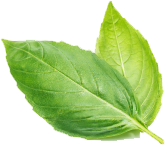
In the wild, orchids obtain moisture from the air through aerial roots. With the help of roots, orchids rest on trees, rocks, and stumps. Garden soil, even fertile soil, is not suitable for orchids (epiphytes), since it does not contain useful components necessary for the full development of these plants.
For indoor epiphytes (for example, phalaenopsis, ascocendra, bifrenaria) you need special soil with the addition of pine bark.
Peat soil for orchids contains a top layer of peat. It has increased moisture capacity. The soil is loose and breathable. It is capable of retaining nutritional components during further feeding and does not contain fine fractions. pH value no more than 5.5.
For an orchid, you first need to choose the right planting container.
Orchids (epiphytes) need a transparent polymer pot – their root system is involved in photosynthesis. The roots of the plant grow in breadth, so the planting container should be wide and low, with many holes for good air exchange. Through a transparent pot, you can also monitor the condition of the root system to avoid rotting and mold development.
The planting container is filled 1/3 with drainage. The plant is carefully placed and sprinkled with ready-made peat soil for orchids and pine bark in a 1:1 ratio. During the first time after planting, the flower must be strengthened in the ground with a stick and a garter.
It is recommended to start watering the transplanted orchid after 7 days.
In order not to flood the orchid, it is very important to monitor the condition of its roots. The humidity of the substrate can be checked with a toothpick – if soil remains on it, then watering should be postponed.
The ideal water acidity level is pH 5.5. Do not use distilled water for irrigation.
Peat soil for orchids is also used to feed the plant.
When transplanting a plant into a new pot, peat soil is added as needed. Not all roots are covered with the substrate. Some of them should remain outside, because… they are airy.

Choose a professional substrate for your
enterprise for 5 questions.